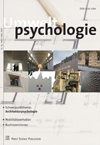Artikeldetails
 Christoph Kohl (2010),
Christoph Kohl (2010),Identitätsstiftender Städtebau und Architektur für die heutige Gesellschaft: Das Beispielprojekt Brandevoort.
Umweltpsychologie 14(1), 130-149.
Dieser Artikel wurde in deutsch verfasst.
| Zusammenfassung: | Bei Diskussionen über traditionellen Städtebau und Architektur ist die Neugründung der Kleinstadt Brandevoort im holländischen Brabant das meistdiskutierte Stadtentwicklungs-projekt, nicht nur in den Niederlanden. In Brandevoort gruppieren sich um einen „historischen“ Kern in Blockrandbebauung weniger dicht bebaute „Dörfer“, die an die Tradition der Gartenstädte anknüpfen. Die Architektur orientiert sich bewusst an regionalen Vorbildern. Der Artikel beschreibt Brandevoort im Kontext aktueller Fragen der Identitätsstiftung im Städtebau und in der Architektur und gibt Einblick in die Rahmenbedingungen der Schaffung von gebauter Umwelt. Dabei werden Themen angesprochen, die von umweltpsychologischer Relevanz sind, wie Identität, Tradition, Formensprache, Kommunikation und Heimat. In einer Zeit der Globalisierung, die vielfach durch Unsicherheit und Instabilität gekennzeichnet ist, ist es Aufgabe der Architektur und des Städtebaus, die Bedürfnisse des Menschen nach Überschaubarkeit, Orientierung, Wiedererkennen von Vertrautem und Kommunikation wahrzunehmen und zu befriedigen. Ziel darf nicht sein, mit der Vergangenheit zu brechen; im Gegenteil: Bei der Schaffung und Gestaltung von erlebnisreichen und pittoresken öffentlichen Stadt-Räumen, die die Menschen sinnlich erfahren und in denen sie sich wohl fühlen sollen, wird bewusst auf historische Vorbilder zurückgegriffen, die sich seit Jahrhunderten bewährt haben. So kann eine starke emotionale Bindung – die monu-mentale Bindung – des Menschen an sein neues Zuhause entstehen. |
| Schlagworte: | Identität Kommunikation Städtebau Umweltpsychologie Öffentlicher Raum |
| Abstract: | When traditional urban design and architecture are discussed, the recently founded small town of Brandevoort in Brabant in the Netherlands is one of the most frequently discussed urban development projects – not only in the Netherlands. In Brandevoort, less densely developed “villages,” reminiscent of garden cities are grouped around a “historical” core in perimeter block development. The architecture is intentionally modelled on regional archetypes. The article describes Brandevoort in the context of current questions regarding the establishment of identity in urban design and architecture and provides an insight into the framework conditions for creation of the built environment. In doing so, topics are addressed which are of relevance to environmental psychology, such as identity, tradition, design vocabulary, communication, and home. In a time of globalisation which, in many ways, is characterised by uncertainty and instability, the task of architecture and urban design is to embrace and satisfy the human need for straightforwardness, orientation, recognition of the familiar and communication. It should not be the aim to break with the past – quite the contrary: In creating and designing exciting and picturesque public urban spaces which people experience sensually and in which they should feel comfortable, we consciously resort to historical paragons which have stood the test of time for hundreds of years. Thus, a strong emotional attachment – the monu-mental attachment – can develop between people and their new home. |
| Keywords: | Communication Environmental Psychology Identity Public Space Urban Design |
Zum Inhaltsverzeichnis

